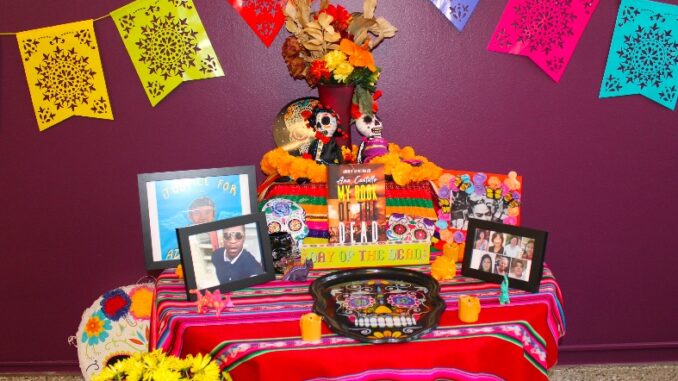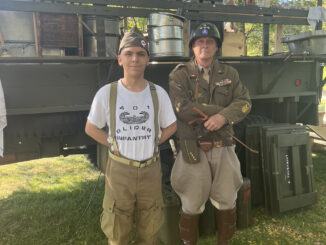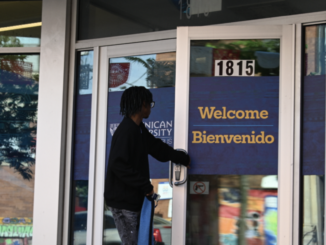
By Chelsea Zhao
Staff Writer
University Día de Los Muertos altars include the history of indigenous spirituality and traditions through collective labor.
Amy Omi, the music liturgist and coordinator for TRHT (Truth, Racial Healing & Transformation), said the collective university input comprised the four altars on campus.
“Every year we follow a process that’s really grounded in learning, about history and practice of developing a deep reverence for the sake of the nature of the practice, and really honoring the indigenous roots of the practice,” Omi said.
Staff from Center for Cultural Liberation, students, library staff and recipe box staff all participated in synthesizing their visions for the altars.
UMinistry students and staff went to the Museum of Mexican Art on Oct. 8 to gather inspiration for the altar. From Oct. 11 to 15, three meetings, two in-person and one on Zoom, opened the brainstorming opportunity to the DU community.
Jeremiah Barr from Dominican University Performing Arts Center helped with structure painting. Beronica Avila from the WeatherTech Innovation Lab put together the website and digital ofrenda. Jacky Neri Arias, director of CCL, also helped with the brainstorming and setup, as well as providing the space in CCL. Allison West organized the Recipe Box Café dedicated to the Indigenous theme.
From UMinistry, Amirah Orozco wrote the theological artist statement from listening to the community and Akua Kankam assisted with the brainstorm sessions.
More than the original tradition of the altar in celebrating the lives of lost ones, Omi said the ofrenda of this year also embody a coping with post-pandemic .
“We are mourning the loss of a way of life and learning to live differently,” Omi said. “We are away, with technology, we don’t get to hug each other and gather as much, and when someone dies, we don’t get to go to funerals as often – we are mourning a lot of things, so we get to name all of that in the blessing of the ofrenda.”
The Rev. Francisco Javier Reyes (CMF), former staff of UMinistry, organized the first altar at Dominican University in 2014 in partnership with Anthony Suarez-Abraham’s Guadeloupe course in the theology department. Javier said the altar received many positive responses from the community and brought amity among the people.
“That’s what the name ofrenda comes from, you know, from Spanish, it’s to offer our lives, our prayers,” Javier said.
After Javier left Dominican to be ordained, the UMinistry staff took over the organization and planning of the altars for the years since. Javier said he is proud of how consistent Dominican has kept the tradition alive.
“I’m very proud of how the ministry has been able to keep up this faith tradition and continue to bring the community together,” Javier said.
*CMF(Claretian Missionary Fathers) is a Catholic congregation of priests of U.S. and Canada
https://www.claretiansusa.org



